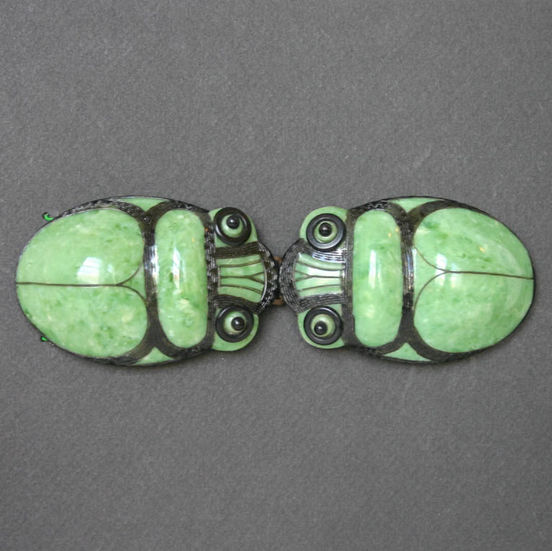"...buttons are richly varied, often exquisitely crafted, imaginatively designed and made of valuable materials. In their making they reveal our impulse to enhance even the most familiar and minute details of everyday life and in their collecting they represent our ever-present desire to find the extraordinary in the commonplace."
- Diane Epstein & Millicent Safro in Buttons
The first written record of 'buttons' occurs in the twelfth century and the earliest evidence of button collecting is in the early nineteenth century and by the late nineteenth century the button was becoming a respectable collection subject. Button collecting, in an organised sense had its origins in the United States in the 1930s and by the 1950s button collecting was a sophisticated international pursuit.
Ruth Meier formed her collection whilst living in Europe and these buttons were purchased in Europe and the Unites States. Her enthusiasm and increasing knowledge led her to become a button dealer achieving an international reputation. She was an early enthusiast for buttons produced between 1920 and 1940 and this selection concentrates on this period within her very extensive collection. Now based back in New Zealand she still trades locally.
In the early decades of the twentieth century buttons became simpler than they had been for much of the preceding century. The advent of costume jewellery, the middle class woman who worked and zips all contributed to a diminishing demand for flamboyant buttons. One exception to this trend was the appearance from 1910 onward of the silk garter button that often featured a painted face. However it was the invention of new synthetic materials, such as Bakelite and celluloid that led to a new flourishing within the button industry from 1920 onwards and made possible the manufacture of some of the most extravagant buttons produced.
This selection features Art Deco design buttons of characteristically bold geometric shape. Some of these draw their inspiration from the qualities of machine age others are inspired by ancient Egypt and are made of Bakelite, glass and shell.
Changes in economic and social life combined with the new materials led to the development of novelty buttons known to collectors as 'realistics' or 'goofies'. These buttons capture aspects of modern life; movies, smoking and shiny new objects. While at the same time one-off buttons for the specialist haute couture market continued to be made and are represented in this selection by some particularly unusual Italian fabric buttons and French buttons of mixed media.

Art Deco Egyptian-inspired Scarab Beetle button duo.

Art Deco bakelite button.